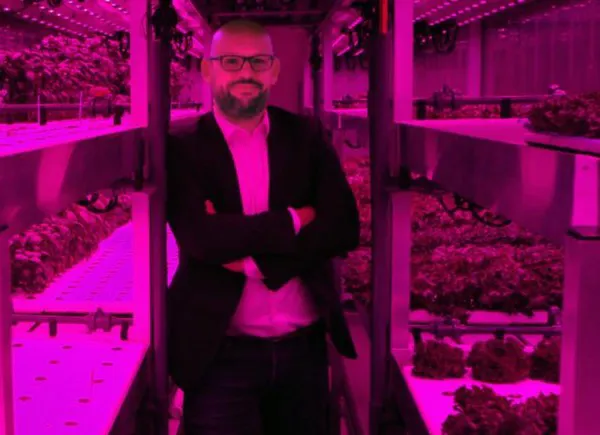Today, in theory, there is enough food on the planet to feed approximately 12 billion people, but the way it is distributed around the world is inefficient and unsustainable. As food is transported across the entire globe, its shelf life or freshness tends to deteriorate considerably and a lot of food often goes to waste. Indoor growing is a step closer to a new situation – one in which it is possible to grow locally produced, fresh food all year round, regardless of the weather and external conditions. It may even enable us to change the face of the food industry.
However, this requires a different way of thinking. “Indoor growing is different from growing in a greenhouse in several ways,” says Fred Ruijgt, Market Development Indoor Growing. “In an automated, glass greenhouse you have to deal with external influences such as wind, rain and sun. These variables need to be managed as effectively as possible, with or without additional technology. The grower is constantly working to achieve a stable climate for the crop. Indoor growing allows you to create your own optimal climate. The grower determines the growing conditions, from light level to air circulation.”
 Fred Ruijgt
Fred Ruijgt
Comparing apples with oranges
According to Fred, many investors try to compare indoor growing with traditional horticulture. “In terms of investment and profitability, it is difficult to compare them,” he says. “It’s like comparing apples with oranges. It’s important to understand the differences between traditional horticultural practices and indoor growing. You can’t simply calculate what a greenhouse yields per square meter and compare it to an indoor farm. In a greenhouse you have to consider the crop cycle and in which months you can harvest and thus what you can supply to your customers. With indoor growing you can supply all year round, creating more opportunities to reach supply agreements with customers. But you also need to invest.
Indoor growing offers some sustainability benefits because considerable savings can be made on water, nutrients and use of pesticides. But, compared to a traditional greenhouse, much more artificial lighting is required. Also, the location and local sales potential should be included in the comparison. After all, a traditional greenhouse is not even an option in some countries, whereas in the Netherlands, for example, it probably costs two to three times more to grow fresh produce in an indoor farm than it does in a greenhouse.” Another difference is that traditional horticulture has traditional sales channels such as auctions, traders and cooperatives. That’s not the case with indoor growing – it’s more important to understand and collaborate with the entire chain.
Food security and food safety
The fact that indoor growing doesn’t have traditional sales channels is precisely what makes it special. “Indoor growing is clean and pesticide-free, resulting in high-quality and plannable production. An indoor farm can also be built in urban areas, which means that there’s always fresh, locally grown produce available for consumers. The product is often shipped directly from the indoor farm to, for example, the supermarket, so the route to the consumer is shorter. Therefore, in the case of indoor growing, it is important that the facility is an integrated part of the total chain: from suppliers to customers. That keeps the route nice and short,” continues Fred.
An indoor farm can be situated anywhere in the world and in any type of climate, whereas it is often not possible to build a greenhouse in certain areas. Fred: “In Singapore, for example, no more greenhouses can be built because there’s no agricultural or horticultural land available. An indoor farm offers a solution because it can be set up inside an existing building. This is an efficient alternative and it greatly reduces the dependence on food imports.”
Down to the consumer
The technology has already been proven in a number of large-scale indoor growing projects. So why isn’t this way of growing more common? “That’s because of several factors,” explains Fred. “Right now, indoor farms are mainly being integrated into existing retail chains. In addition, the demand largely comes from areas with a high average income. The existing retail chains have a vision and they always want to deliver good-quality products, so it makes sense for them to invest in this. But what are consumers prepared to pay for a fresh head of lettuce, for example,? If consumers start to value fresh and good-quality food more, entrepreneurs will be more willing to invest in a more sustainable way of producing food.”
For more information:
Priva
www.priva.com
contact.priva@priva.nl
